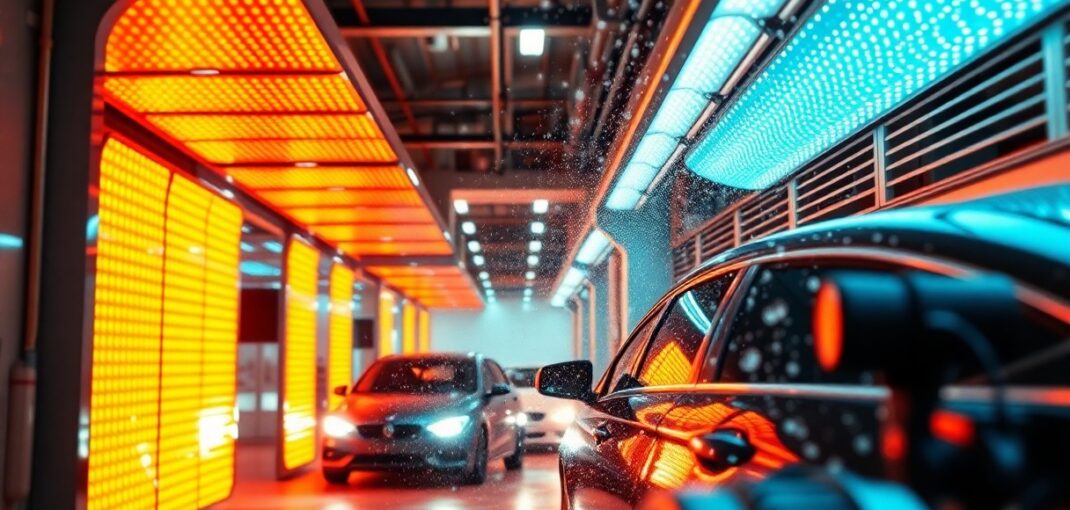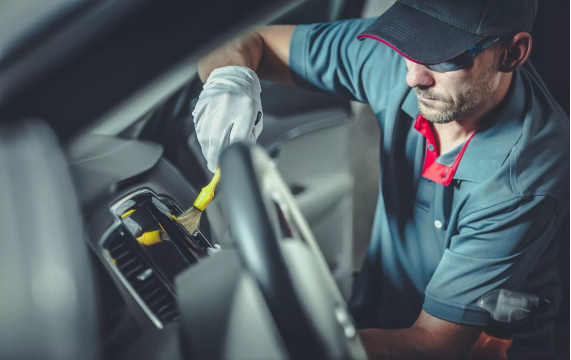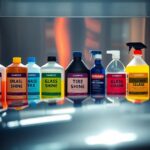It’s vital to choose the right heating system for your car wash as it directly impacts efficiency and customer satisfaction. In this post, you will explore the key differences between infrared tunnel heaters and forced-air systems, evaluating their benefits and drawbacks. Understanding how each option works and their effectiveness in drying vehicles will help you make an informed decision that best suits your operational needs and enhances your car wash experience.
Overview of Infrared Tunnel Heaters
Infrared tunnel heaters use advanced technology to directly heat surfaces by emitting infrared radiation. Instead of warming the air like traditional systems, these heaters target the vehicle’s surfaces, ensuring quicker drying and better results. The design of infrared heaters often allows for a more even heat distribution along the wash line, leading to improved efficiency in the drying process.
How Infrared Heaters Work
Infrared heaters operate by emitting infrared wavelengths that are absorbed by objects, including the vehicle itself. This direct heating method causes moisture on the vehicle’s surface to evaporate more rapidly. You’ll notice the difference as your car dries quickly without the need for excessive airflow, reducing the overall drying time in your wash process.
Benefits of Infrared Heating
The use of infrared heating offers numerous advantages for your car wash operation. Enhanced efficiency, reduced energy consumption, and quicker drying times are just a few benefits that translate to improved customer satisfaction and lower operational costs. Infrared heaters are also less likely to disturb loose dirt or debris, providing a cleaner drying process.
Implementing infrared heating can significantly enhance your car wash’s performance. For example, studies have shown that infrared heaters can reduce drying times by up to 50%, allowing more vehicles to be processed within the same operational timeframe. Additionally, energy savings can be substantial, with infrared heaters often consuming 30% less energy compared to traditional forced-air systems. This translates not only to lower utility bills but also provides a more eco-friendly option, appealing to environmentally conscious customers.
Overview of Forced-Air Heaters
Forced-air heaters utilize a fan to disperse heated air throughout your car wash, providing an effective drying solution for vehicles. These systems draw cool air from the environment, pass it over a heating element, and then distribute the warmed air into the wash bay. This method not only accelerates the drying process but can also be adjusted for different vehicle types and conditions, offering versatility to your operations.
Mechanism of Forced-Air Systems
In a forced-air heating system, ambient air enters the unit via an intake, where it is heated through an electric or gas-powered element. The fan then pushes this warm airflow out through ducts or nozzles, ensuring even coverage across the drying area. This continuous circulation of heated air boosts evaporation rates on wet surfaces, significantly reducing drying times.
Advantages of Forced-Air Heating
Forced-air heating offers several benefits that can enhance your car wash operations. These systems are typically quick to install and can be easily integrated into existing setups. They also provide uniform heat distribution, minimizing the risk of cold spots that could lead to water spots on vehicles.
In addition to rapid installation, forced-air heaters allow for adjustable temperature settings based on seasonal needs; for example, increasing heat during colder months ensures optimal drying. Their energy efficiency also translates to lower operational costs, as they can be operated selectively during peak wash times. Furthermore, many forced-air systems have built-in sensors that optimize airflow based on humidity levels, thus adapting their performance to varying conditions automatically. This responsiveness can significantly enhance the quality of service you deliver and improve customer satisfaction.
Efficiency Comparison
| Aspect | Infrared Tunnel Heaters | Forced-Air Heaters |
|---|---|---|
| Energy Consumption | Lower due to targeted heating | Higher, as air is heated and dispersed |
| Drying Time | Faster on specific surfaces | Slower across larger areas |
Energy Consumption
Infrared tunnel heaters are typically more energy-efficient than forced-air heaters. They deliver focused warmth directly to vehicles, reducing energy waste and operating costs. In contrast, forced-air systems expend energy heating entire air volumes, leading to higher electricity bills for your car wash.
Drying Time Analysis
Infrared tunnel heaters usually offer quicker drying times because they heat surfaces directly, allowing for rapid evaporation of moisture. Forced-air heaters may require additional time to fully dry your vehicles since they rely on air currents, which can be less effective depending on environmental conditions.
Additional insights into drying time reveal significant disparities between the two systems. Infrared heaters can reduce drying time by up to 50%, enabling faster throughput during peak hours. This efficiency not only enhances customer satisfaction but also contributes to overall productivity. In contrast, the slower drying times associated with forced-air systems can lead to bottlenecks during busy periods, impacting your car wash’s operational effectiveness.
Cost Considerations
Evaluating the cost implications of infrared tunnel heaters versus forced-air heaters is imperative for optimizing your car wash operation. Balancing initial investments with ongoing operating expenses can significantly impact your long-term profitability and operational efficiency.
Initial Investment
The initial investment for infrared tunnel heaters is generally higher compared to forced-air systems due to their advanced technology and construction. Prices for infrared heaters can range from $10,000 to $30,000, while forced-air systems may cost between $5,000 and $15,000. Weighing this upfront cost against the benefits is critical for your budgeting process.
Operating Costs
Operating costs can vary significantly between infrared and forced-air heaters. Infrared systems typically consume less energy, resulting in lower utility bills, while forced-air heaters can lead to higher energy expenditures due to their reliance on fans and longer drying times.
With infrared heaters, you might see energy savings of 30% to 50% compared to forced-air systems, translating into savings of hundreds to thousands of dollars annually, depending on your volume. Maintenance costs also lean in favor of infrared, as their design often requires less frequent servicing. Additionally, consider water usage; infrared heaters enable quicker drying which reduces water runoff and associated treatment costs. These factors make infrared a compelling option for optimizing your car wash’s overall cost efficiency.
Effect on Car Wash Quality
The choice between infrared tunnel heaters and forced-air systems significantly influences the overall quality of your car wash. Infrared heaters provide a consistent and gentle heating effect that helps in drying cars uniformly without risking damage to painted surfaces. In contrast, forced-air systems may vary in performance, causing uneven drying and potential water spots, ultimately affecting the appearance of the vehicle once it leaves your facility.
Impact on Vehicle Finish
Infrared heaters excel in drying without causing damage, preserving your vehicle’s finish. Their warming effect gently evaporates water, reducing the risk of streaks and spots. Forced-air systems can sometimes create turbulence that might disturb a vehicle’s surface, leading to inconsistencies in dryness and finish quality.
Customer Satisfaction
Your customers’ experience is directly linked to the quality of the wash and drying process. Infrared heaters often lead to a more polished finish, enhancing customer perceptions of your service quality. Consistent results foster repeat business and word-of-mouth referrals, boosting your car wash’s reputation in the competitive market.
Customer satisfaction hinges on the dry quality and presentation of vehicles post-wash. With infrared heaters, you create a reliable drying process that keeps finishes immaculate, ensuring clients leave your wash impressed. Surveys consistently show that car owners prioritize the appearance of their vehicles after washing; thus, using infrared technology can translate into higher customer retention rates. Positive experiences lead to loyalty, increasing your overall profitability and positioning your car wash as a leader in service excellence.
Environmental Considerations
Evaluating the environmental impact of your heating solution can significantly influence your car wash’s sustainability efforts. Infrared heaters, for example, can be more energy-efficient compared to forced-air systems, leading to lower energy consumption. This aspect is crucial as reducing your carbon footprint aligns with growing consumer demand for eco-friendly practices. For a deeper probe the operational differences, check out Infrared Radiant Heat vs Forced Air Heat (Hot Air).
Energy Source Impact
Your choice of heater can affect your overall energy consumption and the associated costs. Infrared heating systems often use electricity, resulting in lower operational costs if sourced from renewable energy. In contrast, forced-air systems typically rely on natural gas or electricity, which can significantly vary in price based on market conditions and your location.
Emissions and Sustainability
Assessing emissions from your heating system is vital to enhancing your car wash’s sustainability profile. Infrared heaters generally produce fewer emissions, particularly if powered by renewable energy. In contrast, forced-air systems can emit higher levels of CO2, especially when using natural gas. By investing in infrared technology, you contribute to cleaner air while still achieving efficient drying results.
In the context of emissions and sustainability, infrared heaters stand out as they directly convert electrical energy into heat with minimal waste. For instance, many infrared models boast efficiencies exceeding 90%, significantly reducing greenhouse gas emissions compared to traditional forced-air systems, which might operate closer to 70% efficiency. This shift not only enhances your car wash’s eco-friendly credentials but also appeals to environmentally-conscious customers looking for sustainable options.
Summing up
Upon reflecting on the comparison between infrared tunnel heaters and forced-air systems for your car wash, it’s clear that each has its unique advantages. Infrared heaters offer efficient energy use and targeted drying, while forced-air systems provide rapid circulation and versatility. Your choice should depend on factors like your wash setup, budget, and specific drying needs. Evaluating these elements will help you make an informed decision that enhances efficiency and customer satisfaction in your car wash operations.







